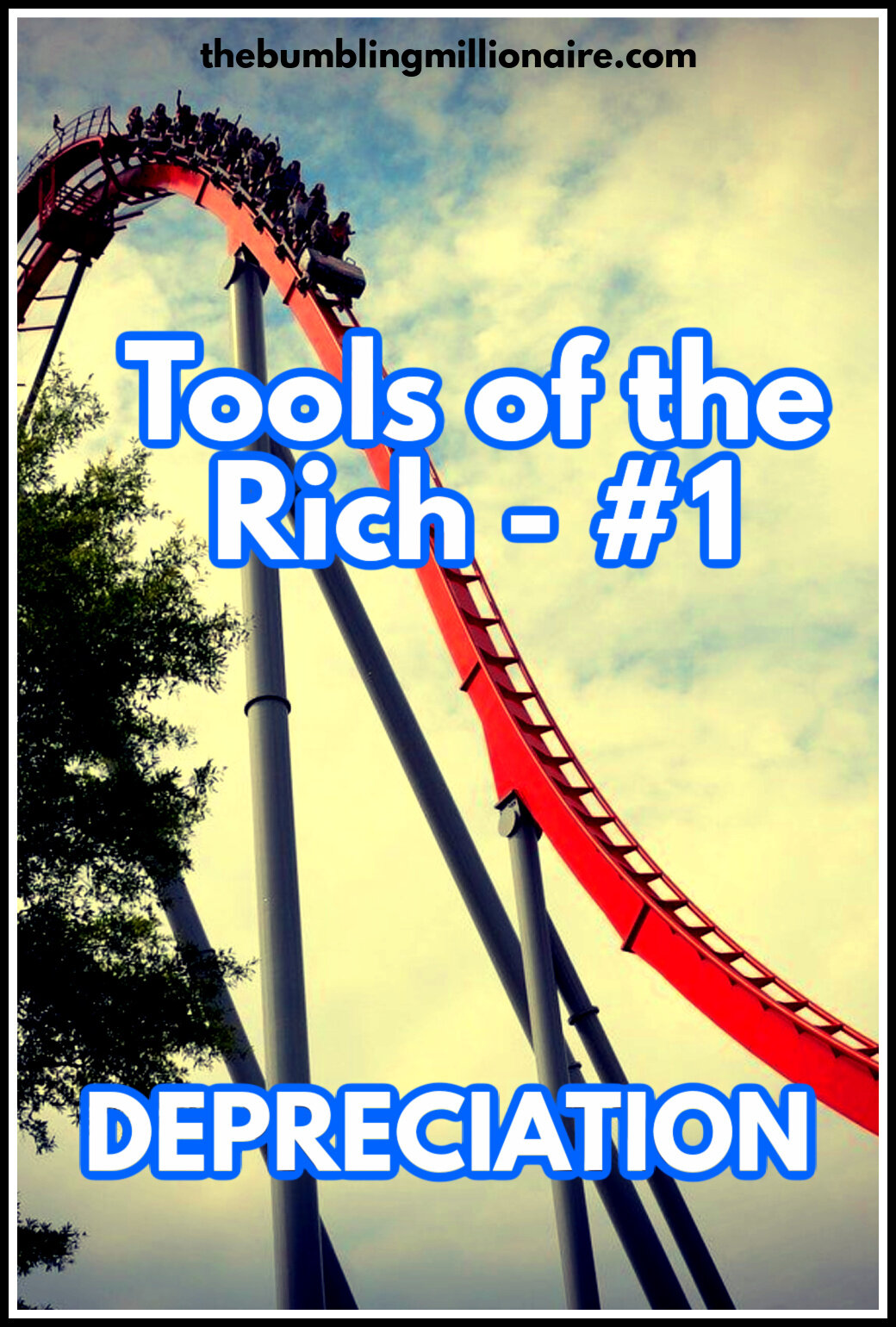When NOT Owning Real Estate Makes More Sense
/This post may contain affiliate links. Learn more by reading my disclosure.
A former client of mine was a successful franchisee who preferred to lease his store locations. However, when he couldn’t find an acceptable location to lease, he purchased a building that met his needs. This happened to him twice.
When he couldn’t lease or purchase a suitable location, he was forced to purchase land and construct a building for his business. This also happened to him twice.
Therefore, he had four buildings in his portfolio that he didn’t want to own, but needed to for the sake of opening stores in certain markets.
Several years ago, he asked me to sell the two buildings he constructed on a “sale-leaseback” scenario.
“Why do you want to do to that?” I asked, thinking owning real estate was what every successful person wanted to do.
“Colin,” he said, “I’m in the retail business, not real estate. My business has capital tied up in those buildings that I can’t access to open new stores.”
That was a point I hadn’t really considered before.
“And,” he continued, “if one of those stores is underperforming I can’t relocate it because I own the building. I’m stuck. I want the power to move when a lease is over, if need be.”
Retail is a moving target because traffic patterns can change as new neighborhoods are built and demographics evolve. Retailers need the ability to move or close stores. Even if they are in the middle of a lease, a retailer has options. They can petition the landlord for rent relief (rent reduction), they can buy-out of their lease (pay an amount to terminate early) or they can sub-lease their space to another user.
Sometimes owning real estate may actually hamper their ability to respond to market changes.
The sale-leaseback can be a powerful tool for business owners to recover their capital and maintain their current locations.
How It Works
The sale-leaseback is very simple. The landlord sells his property and then immediately leases it back from the new buyer. During the purchase negotiation, the lease terms are dealt with to the satisfaction of both parties.
The sale value is derived one of two ways: either with the sale price as the driving factor, or the rent as the driving factor. In either situation, the seller (soon to be tenant) is the one to identify which matters more (sale price versus rent).
Example #1 – Sale Price as Driving Factor
Retailer A wants to sell her building for $1,000,000. She won’t settle for a penny less. She thinks she’s a low-risk retailer in a low-risk market. She’s offering a 6% return (capitalization rate) on that $1,000,000 price.
$1,000,000 x 6% = $60,000 annual rent (or $5,000/month)
A buyer won’t convince this seller to budge on her price. Therefore, the only thing that will move in the negotiation is the offered return which, in turn, affects the monthly rent. An interested buyer thinks Retailer A is a good deal, but wants a 7% return for the $1,000,000 price.
$1,000,000 x 7% = $70,000 annual rent (or $5,833/month)
If seller and buyer can agree to the new rent figure, the deal will get done.
Example #2 – Rent as Driving Factor
Retailer B wants to sell his building, but he won’t pay more than $3,000/month in rent. He knows what he can (or will) pay and that’s it. He’s offering an 8% return (cap rate) on the property’s income stream with him covering the property’s expenses.
$3,000 x 12 months = $36,000 annually ÷ 8% = $450,000
An interested buyer likes the property. However, the retailer is in a very small market and is a family business. Family or single-person operations are riskier than large companies. Health matters, personal matters, etc. can easily affect a small business. Therefore, risk affects desired return.
The buyer offers an 9% cap rate to complete the purchase.
$3,000 x 12 months = $36,000 ÷ 9% = $400,000
If the buyer and seller can agree to the new purchase price, the deal will get done.
Put Your Thinking Cap On
The common denominator in both examples is the Capitalization Rate (Cap Rate). Think of a Cap Rate as the return an investor is going to receive on an investment.
- A lower cap rate equals less risk and a higher value to an investor.
- Conversely, a higher cap rate equals more risk and a lower value to an investor.
Investors may also use other tools such as Cash on Cash and Internal Rate of Return (IRR) to value an investment, but when you’re looking at a Sale-Leaseback the cap rate is the quickest metric to get you to your sale price or rental rate.
After that’s determined, you can dig deeper in the due diligence process to make sure this is an investment you want to pursue.
An Actual Sale-Leaseback That We Purchased
NAPA Auto Parts, Chewelah, WA
Since this is an active deal with partners and a tenant, I can’t release specific deal points. I did my best to share what we learned in the process, though.
A year ago, we purchased a building in Chewelah, Washington. The property, a 7,800 SF retail building, was owned by the local franchisee for NAPA Auto Parts. My investing partner, Kevin, had gotten word the franchisee was interested in pursuing a “sale-leaseback” opportunity. When we heard that phrase, we were excited to talk with the operator and immediately met with him.
A sale-leaseback is a great opportunity for an investor. The tenant is already built-in and a lease won’t start until the day of closing.
It turned out that the operator wanted to move his capital from the building to other pursuits. His reasoning was very much the same as my former client.
Kevin and I had a conversation about the property and the city of Chewelah. When discussing a sale-leaseback, this is a real concern: What happens if the tenant leaves?
We loved the location of the building. It was one building off from the corner of Main & Main in downtown. Located in Stevens County, roughly an hour north of Spokane, Chewelah is the home of 49 Degrees North Mountain Resort which is experiencing a new wave of development. Per the 2010 census its population was just over 2,600. Almost everyone passes the building on their way up to the mountain to go skiing and to return home. It’s a great small town and one we see potential in long-term.
The building was also in decent shape. It could be demised into a couple smaller bays (it had previously been two buildings combined). While we hope our tenant never leaves, we believe the building would attract enough attention to get it leased quickly.
We also believed that there is a need for auto parts stores, especially in small towns. When you need to get your car back on the road, you can’t wait for your favorite on-line retailer to deliver the part. You need to get it now. There are NAPA Auto Parts stores in almost every small town in America.
When we started to talk about the eventual sale price and lease rate, the operator stated he didn’t want to pay a higher rent than he was currently paying to himself. Therefore, we knew we weren’t going to challenge that deal term.
Our discussion focused on the cap rate which then dictated the final purchase price.
It was a nice, clean deal for both sides. After we closed on the property, we painted the building and then striped the parking lot, giving it a fresh look. Read about why we think curb appeal is so important here.
Lessons Learned
Understand the Seller’s Motivation.
This is good advice for all transactions, whether it be for real estate, a car or an antique you found on craigslist. If you understand the motivation, you’ll usually ascertain whether you’re getting a good deal or being hustled.
Don’t Be Afraid to Invest in Smaller Towns.
This building might worry some investors as it’s not in a major metropolitan area. However, we are excited by the opportunity to invest in a smaller town. It had a great story and new growth on the way. If we only invested in our market (which is a mid-market city), we would have missed out on this opportunity.
Look beyond your current city to those surrounding towns. Which of them have new developments on the horizon or great stories to tell? Those might be the areas where you want to start looking to pick up a solid commercial real estate deal.
Have you completed a sales-leaseback opportunity or are you looking for one? I'd love to hear you story.







